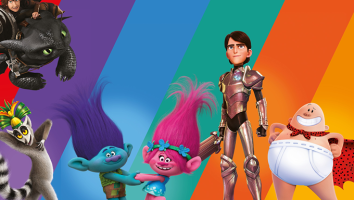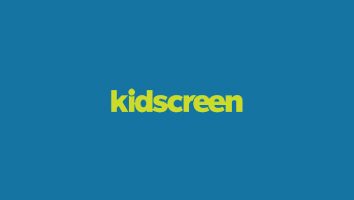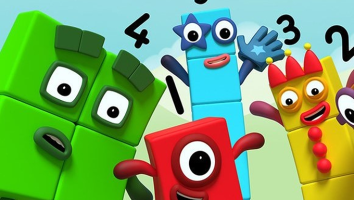This week, we’re showcasing a series of features from Kidscreen‘s June/July issue all about AI. Today, we’re highlighting how producers are using AI right now. Yesterday, we Kidscreen columnist Evan Baily explored everything the industry needs to know about copyright. And tomorrow, we’re sharing a debate on the tech between two well-known producers.
We can safely put aside thoughts of evil robots taking over the world for now; artificial intelligence (AI) is still pretty far from realizing its often-insidious portrayal in sci-fi movies like The Matrix. But it is here, and it’s making its way into the kids entertainment business as a technology with dizzying potential for both positive improvement and peril. So where are we now, and what can we expect next?
AI can be a bit overwhelming, but you can sum it up as a technology that uses mass amounts of data to generate predictions, actions or judgments for faster and more efficient processes. At that simplified level, AI is already all around us, powering home devices and providing basic customer service online.
Super-advanced AI (also known as deep learning)—which does not require human involvement for a computer to “think” or act—is still in its infancy, and likely 20 to 50 years away from widespread use, says Avi Goldfarb, author, professor and AI chair at the University of Toronto. But with the arrival of ChatGPT this winter, and the fact that the tech is already making inroads into the media and content industry, he advises that execs should be getting up to speed on its potential if they aren’t already.
According to Harvard Business Review, there are three main reasons why AI is typically applied to business: to automate processes, provide insights and engage. This provides a useful framework for examining how AI has entered the kids biz, and where it’s headed.
THE SAME BUSINESS, JUST AUTOMATIC
California’s Genius Brands International (GBI) made a splash this winter with the announcement that it’s using ChatGPT, AI text-to-video and video animation tools to help with production processes for two new animated series for YouTube and its Kartoon Channel! AVOD.
GBI used AI to help generate scripts, art and animation for Kidaverse Fast Facts, a series of 15- to 30-second shorts that launched in March. New videos, in which three kids share bite-sized trivia about history, science and sports, air weekly.
Shortly after that announcement, GBI unveiled another AI-powered project, Secret Millionaires Club Minis (26 x one minute), designed to teach kids about financial literacy.
These short-form series have allowed the prodco to explore methods for automating its pipeline. GBI has already discovered multiple uses for AI, including text-to-image and text-to-speech generation (enter a text prompt, and AI creates an image or audio). The company has also used the tech to generate avatars and improve the quality of videos and images, says Todd Steinman, president of Genius Networks at GBI.
“[The two series] are low-lift initiatives that let us test the water in an innocuous way,” Steinman explains. “AI is a great creative partner and tool that assists the creative process, but does not replace it. AI tools can’t initiate or ideate without human input, and that isn’t changing anytime soon.”
AI’s core value is that it can handle mundane and repetitive tasks, such as making new visuals—thereby freeing up creatives to actually create, he adds. Since GBI began slowly integrating artificial intelligence into its workflow, Steinman has seen it generate ideas and save time iterating by automatically creating assets.
“AI offers tools that assist us to structure ideas, topics and interests, and it helps us reach our creative goals more quickly, with more options than ever before,” he says. “Working with AI as it evolves allows us to better understand how to leverage it, as well as identify its blind spots.”
The tech’s potential makes it worthy of all the recent hype, says Chris Williams, CEO and founder of pocket.watch. At the moment, pocket.watch is using AI to meet a demand for personalized content, partnering with Denver-based AI company Veritone to bring 11-year-old kidfluencer Ryan Kaji (Ryan‘s World) onto personalized video site Cameo Kids…without him ever having to spend time on the platform. While some adult celebs can afford to invest the labor into creating custom vids for Cameo, it’s unrealistic to ask young talent to spend several hours a week (or more) doing so. And that’s where AI comes in.
Using existing recordings of Kaji’s voice, Veritone’s AI programs can automatically generate animated videos of Kaji’s superhero alter ego, Red Titan, wishing kids happy birthday, or delivering other personalized messages. The tech speeds up the animation and production of the videos so they can be sent to consumers in days, without requiring Kaji’s time to do so.
This is especially valuable for young creators, whose working time is limited. With the help of AI, Kaji can still connect with fans through the videos without having to make content all day, says Williams. “With any of our partners, we never want it to be like they’re in a zoo, where they have to constantly work or perform for the audience. This is the tip of the iceberg in terms of the assistance we get with AI.”
A NEW KIND OF ENGAGEMENT
The magic of connecting kids with their favorite IPs is exactly what Texas-based techco Aquifer is looking to create. The company uses AI to quickly make CG-animated videos, with the goal of making animated storytelling more accessible.
In 2022, Aquifer partnered with Toronto’s Guru Studio (True and the Rainbow Kingdom) to launch fully animated personalized videos on Cameo. And in January 2023, it worked with toyco MGA Entertainment to launch an AI-powered messaging platform called Shoutouts, which similarly offers “customized” messages to kids from characters.

Aquifer sees AI as a tool that can make animation production fast and easy for all creators.
In Shoutouts, kids can create a custom message to be delivered by one of MGA’s L.O.L. Surprise! characters—anything from congrats on your good grades, to happy seventh birthday. An AI program turns the written message into a script that a human reads into Aquifer’s system. Then, AI-powered tech automatically creates the animation on top of this recording, capturing facial expressions, changing the voice and making an animated background.
Aquifer’s goal is to make animation accessible, quick and easy for all producers, says co-founder and CEO Chen Zhang. The tech eliminates the long production times and high costs of animating a video frame by frame. Through Shoutouts, a 45- to 60-second video is delivered in 24 to 48 hours, and the plan is to make the process even faster going forward, says Zhang.
That speed of delivery means brands can quickly respond to trends and social events by making targeted videos for all of their various platforms. No more having to wait weeks or months for a project to make its way through the pipeline and miss out on the latest TikTok trend.
“Every time there’s a hype cycle for a new technology, there’s always this assumption that it’s going to be the be-all, end-all solution, and that’s never the case,” says Zhang. “Our job [as creators] is to maintain the level of quality, fidelity and storytelling, while cherry-picking the bits that AI has to offer and inserting them into our process to gain maximum efficiency.”
For pocket.watch, the tech can also make content curation faster by generating metadata (a project’s synopsis, genre, credits) and creating thumbnails. These are key tasks in the distribution process that can fill a real person’s day, and it’s work that can be passed to AI, adds Williams. Another useful application is in dubbing, since AI can automatically translate content into multiple languages, which makes the process of selling content abroad both faster and cheaper.
Long term, the tech could change what high-quality content looks like as AI gets better at animating, writing and creating on its own, says Williams. But for kidcos that don’t want to create their own AI pipelines, or even figure out the tech themselves, Florida service studio Animatic Media has a solution. It’s a cute AI-powered creature called Furwee. Furwee is a 2D-animated chatbot for kids, built using ChatGPT. Children can type a message to Furwee, and the bot will speak back. The studio self-financed the chatbot and unveiled it in March.

Animatic Media sees its new Furwee AI chatbot as a licensing oppurtunity for brands to turn their characters into chatbots that can communicate with kids.
Animatic is using Furwee as a proof of concept for a new type of licensing opportunity where brands can turn their characters into chatbots that can communicate one on one with kids, says company founder Scott Ownbey. In creating ads for PepsiCo and Sesame Workshop, the studio has seen how hard it can be for brands to reach kids, and these viewers not only crave entertainment, they also want a personalized connection to a brand. Moving beyond making videos and into creating chatbots provides a brand extension that kids can pose questions to, converse with and maybe even become friends with through organic—and safe— conversations, says Ownbey.
Animatic has been shopping the opportunity around to IP owners, and adding new Furwee functions based on what kids want to see in a virtual companion. The key takeaways from the studio’s kid-testing are that children want to be able to speak to a bot instead of just typing, and they want to access it on their mobile devices.
For Animatic, the capabilities of these chatbots range from a subscription service for continual access, to pop-up methods that brand marketers can use to connect with kids. But AI is still so new, brand owners are struggling to understand what the tech can do, how it works and, most importantly, how can they align it with their IPs.
“I’ve seen the potential of this, and we’ll keep refining it as we go, because I’m sure there are many others exploring similar products now,” says Ownbey. “We could train Furwee to be an educational tool, or just offer brands a more interactive way to reach kids.”
THINK SMARTER, NOT HARDER
As executives become more comfortable and familiar with AI, its benefits could extend to helping them make better decisions by providing more accurate market predictions—such as what types of content will be successful based on past sales—or figuring out what kids need to learn most and when, says U of T’s Goldfarb.
The tech is already being offered by vendors in the marketplace, and could be particularly useful to help kids producers optimize YouTube reach by improving keywords, spotting what titles work best, and gauging an audience’s interest. But as the tech builds up its ability to make decisions and predictions, its insights could go beyond YouTube guidance to spotting macro industry trends, identifying who is buying, and determining exactly what those buyers need.
AI also has the potential to optimize digital advertising by making more compelling copy and visuals—and doing it almost instantly. But combining AI and advertising triggers an area of particular concern for the kids media industry: privacy. AI requires a lot of data to make predictions and “learn,” and privacy laws such as COPPA in the US and the GDPR in Europe will eventually have to start addressing the tech’s implications for kids’ privacy and safety, Goldfarb warns.
It’s a sentiment echoed by Ognjen Todic, CEO of San Francisco-based Keen Research, who is optimistic about AI’s potential, but warns that regulation conversations need to start happening soon.
Keen develops speech recognition software that works in devices and mobile apps. ViacomCBS uses the tech for interactive content and videos featured on its kids SVOD platform Noggin.
In its Feeling Faces game, for example, characters such as Rubble from PAW Patrol make faces and ask kids to verbally identify the character’s emotion. Without infringing on their privacy, the software has to be sophisticated enough to catch what kids are saying in order to determine if they have landed on the right answer. The challenge on top of that is to give kids a genuinely interactive experience, in which they feel like they’re in control of the content and engaging authentically with a brand’s characters, says Todic.
“The best-use cases are the ones where the technology is invisible—where the AI is in the background and a device is just making magic happen,” adds Todic.
As the kids business adopts AI into its processes, companies will have to decide if the tech can improve the way content is made, and how much they want to change their processes to put AI to work. In essence, where are the best places for the magic to happen, and how much can be done with tech alone?



























